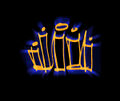Template:Selected anniversaries/September 9: Difference between revisions
No edit summary |
No edit summary |
||
| Line 49: | Line 49: | ||
File:Dennis_Paulson_of_Mars.jpg|link=Dennis Paulson of Mars|2017: ''[[Dennis Paulson of Mars]]'' celebrates the forty-second anniversary of the launch of the [[Viking 2 (nonfiction)|Viking 2]] spacecraft. | File:Dennis_Paulson_of_Mars.jpg|link=Dennis Paulson of Mars|2017: ''[[Dennis Paulson of Mars]]'' celebrates the forty-second anniversary of the launch of the [[Viking 2 (nonfiction)|Viking 2]] spacecraft. | ||
File:Embassy.jpg|link=Embassy | File:Embassy.jpg|link=Embassy|2018: Updated version of ''[[Embassy]]'' published. "The old version was so dark, it was barely visible. This version is much more to my taste," says artist Karl Jones. | ||
</gallery> | </gallery> | ||
Revision as of 05:30, 9 September 2021
1737: Physician and physicist Luigi Galvani born. In 1780, he will discover that the muscles of dead frogs' legs twitch when struck by an electrical spark.
1917: Mathematician and philosopher Georg Cantor publishes new theory of sets derived from Gnomon algorithm functions. Colleagues hail it as "a magisterial contribution to science and art of detecting and preventing crimes against mathematical constants."
1947: First case of a computer bug being found: A moth lodges in a relay of a Harvard Mark II computer at Harvard University.
1975: Viking program: Viking 2 launched. Following a 333-day cruise to Mars, the Viking orbiter will begin returning global images of Mars.
2003: Theoretical physicist and academic Edward Teller dies. He is known colloquially as "the father of the hydrogen bomb", although he did not care for the epithet.
2017: Dennis Paulson of Mars celebrates the forty-second anniversary of the launch of the Viking 2 spacecraft.
2018: Updated version of Embassy published. "The old version was so dark, it was barely visible. This version is much more to my taste," says artist Karl Jones.






